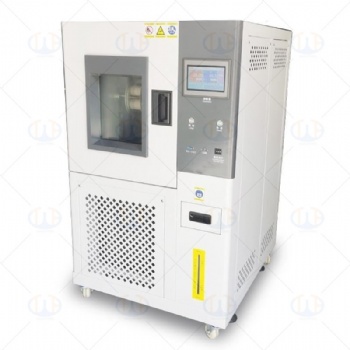News
A Complete Guide to ISO 4700 Pellet Compression Testing Machine
A Complete Guide to ISO 4700 Pellet Compression Testing Machine
In industries such as mining and steel production, iron ore pellets play a crucial role as raw material feedstocks for blast furnaces and direct reduction processes. Ensuring that these pellets are strong enough to withstand handling and transportation is essential for efficient production. One of the most important quality control methods for this is the pellet compression test, which measures the mechanical strength of the pellets. This is where the ISO 4700 pellet compression testing machine comes in.
In this blog, we will cover the key aspects of the ISO 4700 pellet compression testing machine, the importance of the test, relevant standards, and the operating procedures required to obtain accurate results.
What is the ISO 4700 Pellet Compression Testing Machine?
The ISO 4700 pellet compression testing machine is a specialized piece of equipment designed to measure the compressive strength of iron ore pellets. The testing machine applies a load on individual pellets to determine the force required to crush them. This test ensures that the pellets have sufficient mechanical strength to withstand the physical demands of storage, handling, and transportation before they are used in blast furnaces or direct reduction reactors.
Importance of Pellet Compression Testing
Pellet compression testing is critical for the following reasons:
1.Ensures Pellet Durability: Iron ore pellets must be able to resist breakage during handling, storage, and transportation. Weak pellets can disintegrate, causing operational inefficiencies and loss of material.
2.Quality Control: Consistent pellet strength ensures that the pellets will perform reliably during the steel-making process, ensuring optimal furnace efficiency and reducing the risk of furnace malfunctions.
3.Industry Compliance: Many industries require that iron ore pellets meet certain mechanical strength specifications, making pellet compression testing an essential part of the production process.
ISO 4700 Standard: An Overview
The ISO 4700:2015 standard, titled "Iron ore pellets for blast furnace and direct reduction feedstocks – Determination of the crushing strength", provides the method for measuring the compressive strength of iron ore pellets. This international standard defines the procedures for testing the compressive strength of iron ore pellets to ensure they meet the mechanical requirements for use in furnaces.
Scope of ISO 4700
l Test Methodology: It specifies the process for applying compressive load on pellets to determine the crushing strength.
l Sample Preparation: Provides guidelines on selecting and conditioning the test pellets.
l Test Results: Ensures that results are reliable, repeatable, and comparable across different facilities.
Key Test Parameters
When conducting a pellet compression test using an ISO 4700 machine, the following key parameters are measured:
1.Maximum Crushing Load (N): This is the highest force applied to the pellet before it fractures, recorded in Newtons (N).
2.Loading Rate: The test specifies a constant loading rate of 15 ± 5 N/s to ensure uniform testing conditions.
3.Test Environment: The test is typically carried out at room temperature, and the pellets are tested in their natural condition unless specified otherwise.
Test Sample Requirements
Sample Size
The ISO 4700 standard specifies that at least 60 individual pellets should be tested to obtain meaningful and statistically significant results. The pellets must be randomly selected from a larger batch to ensure they are representative of the overall quality.
Pellet Dimensions
Iron ore pellets typically range in size from 9.5 mm to 16.0 mm in diameter, and they should be free from visible cracks or defects before testing.
Conditioning
In some cases, pellets may need to be conditioned by drying at 105 ± 5°C to constant mass, especially when the moisture content is a variable that could affect the test results.
Operating Procedures for ISO 4700 Pellet Compression Testing Machine
Following the correct procedures is critical to obtaining accurate and reliable results. Here’s an overview of the steps involved in using an ISO 4700 pellet compression testing machine:
1. Sample Preparation
l Inspect each pellet visually to ensure there are no visible defects like cracks or irregularities.
l Randomly select a sufficient number of pellets (usually a minimum of 60).
l Condition the pellets by drying, if necessary, according to the test protocol.
2. Machine Setup
l Calibrate the testing machine before each series of tests. This includes checking the load cell for accuracy and verifying the machine’s operation.
l Ensure that the machine has a flat, rigid platen for applying uniform pressure to the pellet.
3. Testing Procedure
l Place the Pellet: Position one pellet at a time between the upper and lower platens of the machine. Make sure it is centered for even load application.
l Apply the Load: Start applying a compressive force at the specified loading rate of 15 ± 5 N/s. Continue applying the force until the pellet fractures.
l Record the Crushing Load: Note the maximum load recorded at the point of fracture. This is the pellet’s crushing strength.
4. Repeat and Record
l Repeat the process for each of the 60 pellets, recording the crushing strength for each individual pellet.
5. Data Analysis
l Calculate the Average Strength: Sum the crushing loads and divide by the total number of pellets tested to determine the average crushing strength.
l Statistical Analysis: Perform statistical analysis to identify the variability in pellet strength and ensure consistency within the batch.
6. Reporting
l Record the test results, including the average crushing strength, standard deviation, and any observed anomalies.
l Reference the ISO 4700 standard in the report and provide details on any deviations from the specified procedures.
Key Features of the ISO 4700 Pellet Compression Testing Machine
A high-quality pellet compression testing machine for ISO 4700 testing includes several essential features:
1.High-Precision Load Cells: The machine must be equipped with load cells that can accurately measure force in Newtons, with an accuracy of ±0.5% or better.
2.Programmable Load Rates: The machine should offer programmable settings to maintain the ISO-specified load rate of 15 ± 5 N/s.
3.Robust Frame: A sturdy, stable frame that minimizes vibration and deformation during testing, ensuring accurate measurements.
4.Automated Data Acquisition: Modern machines come equipped with digital displays and software for real-time data acquisition, allowing for precise measurement and automatic data logging.
5.Multiple Testing Modes: Advanced machines may offer various testing modes for different materials, making them versatile for use beyond iron ore pellets.
Benefits of Using an ISO 4700 Pellet Compression Testing Machine
l Consistency in Results: Using a machine designed specifically for ISO 4700 ensures that your test results are consistent and repeatable.
l Compliance with International Standards: Following ISO 4700 helps ensure your pellet production meets global quality benchmarks, making your product suitable for international markets.
l Improved Pellet Quality: Regular testing allows manufacturers to monitor and improve the mechanical strength of their pellets, reducing the risk of damage during handling and transportation.
Conclusion
The ISO 4700 pellet compression testing machine is an essential tool for determining the compressive strength of iron ore pellets. By following the guidelines laid out in the ISO 4700 standard and using a properly calibrated machine, manufacturers can ensure their pellets are of high quality, capable of withstanding the rigors of handling, transportation, and use in steel production.
Adopting ISO 4700 testing procedures not only ensures compliance with international standards but also contributes to improving the efficiency and reliability of pellet-based processes in the steel industry. If you're looking to enhance your quality control processes, investing in a reliable ISO 4700 pellet compression testing machine is a step in the right direction.
For more information or to explore pellet compression testing solutions tailored to your needs, feel free to contact us!
2 ton tension stress testing system, 2 ton tension stress testing machine, 2 ton tensile testing system, 2 ton tensile testing machine
Categories
Contact Us
- +86-18615632092
- wtbequipment@hotmail.com
- sophie-tester
- +86-18615632092




 售前客服
售前客服